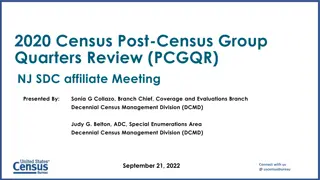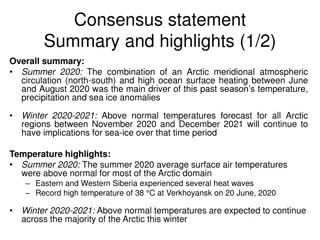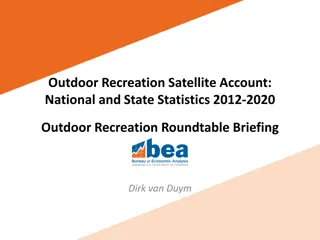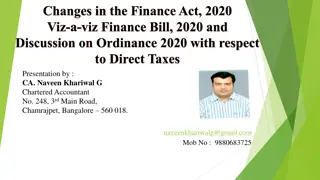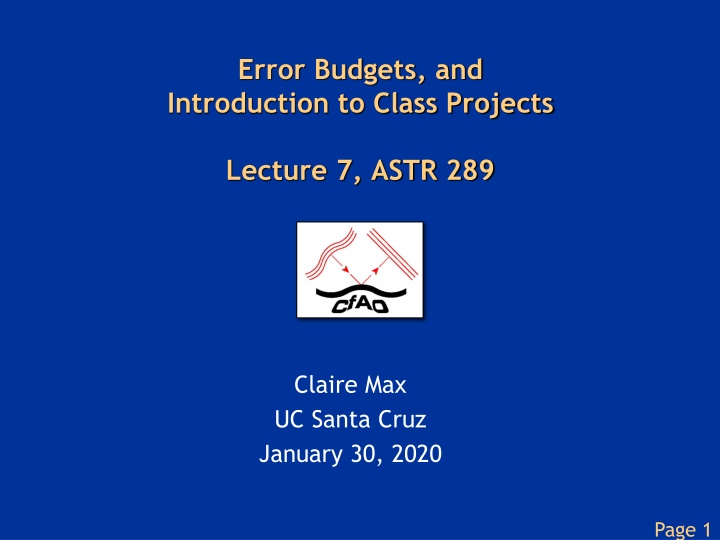
Residual Wavefront Error in Optical Systems
Learn about residual wavefront error in optical systems, how to calculate it, and the importance of error budgets in managing overall wavefront errors. Explore the impact of various physical effects on the wavefront error and how to quantify and address them effectively.
Download Presentation

Please find below an Image/Link to download the presentation.
The content on the website is provided AS IS for your information and personal use only. It may not be sold, licensed, or shared on other websites without obtaining consent from the author. If you encounter any issues during the download, it is possible that the publisher has removed the file from their server.
You are allowed to download the files provided on this website for personal or commercial use, subject to the condition that they are used lawfully. All files are the property of their respective owners.
The content on the website is provided AS IS for your information and personal use only. It may not be sold, licensed, or shared on other websites without obtaining consent from the author.
E N D
Presentation Transcript
Error Budgets, and Introduction to Class Projects Lecture 7, ASTR 289 Claire Max UC Santa Cruz January 30, 2020 Page 1
What is residual wavefront error ? Science Instrument AO Telescope System Less distorted wavefront (but still not perfect) Very distorted wavefront Page 2
Shape of Deformable Mirror Incident wavefront Corrected wavefront Image of point source Image of point source Credit: James Lloyd, Cornell Univ.
Units of wavefront error Electromagnetic wave propagation 2pnx l E = E0exp(if)= E0expi(kx-wt)= E0expi -wt Change in phase due to variation in index of refraction n Can express as: Phase ~ k x = k0n x (units: radians) Optical path difference /k = x(units: length) Frequently microns or nanometers Waves: x / (units: dimensionless) Page 5
How to calculate residual wavefront error Optical path difference = z where k z is the phase change due to turbulence Phase variance is 2= <(k z)2 > If several independent effects cause changes in the phase, ( ( ) 2 stot 2= k2 Dz1+ Dz2+ Dz3+... ) 2+ Dz2 ( ) 2+ Dz3 ( ) 2+... Dz1 = k2 Sum up the contributions from individual physical effects independently Page 6
An error budget can describe wavefront phase or optical path difference ( ( ) 2 stot 2= k2 Dz1+ Dz2+ Dz3+... ) 2+ Dz2 ( ) 2+ Dz3 ( ) 2+... Dz1 = k2 Be careful of units (Hardy and I will both use a variety of units in error budgets): For tip-tilt residual errors: variance of tilt angle < 2> Optical path difference n z in meters: OPDm Optical path difference n zin waves: OPD = n z / Optical path difference in radians of phase: = 2 OPD = (2 / ) OPDm = k OPDm Page 7
Question If the total wavefront error is tot2 = 12 + 22 + 32 + + List as many physical effects as you can think of that might contribute to the overall wavefront error tot2 Page 8
Elements of an adaptive optics system Deformable mirror fitting error Not shown: tip-tilt error, anisoplanatism error temporal delay, noise propagation Non-common path errors Measurement error Page 10
Hardy Figure 2.32 Page 11
What is an error budget ? 1. The allocation of statistical variations and/or error rates to individual components of a system, in order to satisfy the full system's end-to-end performance specifications. 2. The term error budget is a bit misleading: it doesn t mean error as in mistake - it means performance uncertainties, and/or the imperfect, real life performance of each component in the system. 3. In a new project: Start with top down performance requirements from the science that will be done. Allocate errors to each component to satisfy overall requirements. As design proceeds, replace allocations with real performance of each part of system. Iterate. Page 12
Wavefront errors due to time lags, 0 Wavefront phase variance due to 0 If an AO system corrects turbulence perfectly but with a phase lag characterized by a time then ( ) 5/3 st 2= 28.4 t t0 Hardy Eqn 9.57 The factor of 28.4 out front is a significant penalty: have to run AO system a lot faster than = 0 For 2 < 1, < 0.13 0 In addition, closed-loop bandwidth is usually ~ 10x sampling frequency have to run even faster Page 13
Wavefront variance due to isoplanatic angle 0 If an AO system corrects turbulence perfectly but uses a guide star at an angle away from the science target, 5/3 q q0 sangle = 2 Hardy Eqn 3.104 Typical values of 0 are a few arc sec at = 0.5 m, 15-20 arc sec at = 2 m Page 14
Deformable mirror fitting error Accuracy with which a deformable mirror with subaperture diameter d can remove wavefront aberrations With a finite number of actuators, you can t do a perfect fit to an arbitrary wavefront 5/3 d r0 sFitting = m 2 Constant depends on specific design of deformable mirror For segmented mirror that corrects tip, tilt, and piston (3 degrees of freedom per segment) = 0.14 For deformable mirror with continuous face-sheet, = 0.28 Page 15
Error budget concept (sum of 2 s) stot 2=s1 2+s2 2+s3 2+... radians2 There s not much to be gained by making any particular term much smaller than all the others: try to roughly equalize all the terms Individual terms we know so far: ( ) 5/3 sangle = q q0 2 Anisoplanatism ( ) 5/3 st 2= 28.4 t t0 Temporal error ( ) 5/3 sFitting =m d/r0 2 Fitting error Page 16
We will discuss other wavefront error terms in coming lectures Measurement error Wavefront sensor doesn t make perfect measurements Finite signal to noise ratio, optical limitations, Non-common-path errors Calibration of different optical paths between science instrument and wavefront sensor isn t perfect Calibration errors What deformable mirror shape would correspond to a perfectly flat wavefront? Tip-Tilt errors Need to rephrase these in terms of wavefront error rather than angle of arrival variance Page 17
Error budget so far stot 2=sfitting +sanisopl +stemporal +smeas +scalib +stip-tilt +..... 2 2 2 2 2 2 Still need to work these out Try to balance error terms: if one is big, no point struggling to make the others tiny Page 18
Keck AO error budget example (not current) Assumptions: Natural guide star is very bright (no measurement error) 10 degree zenith angle Wavefront sensor bandwidth: 670 Hz Note that uncorrectable errors in telescope itself are significant Page 19
We want to relate phase variance <2> to the Strehl ratio Two definitions of Strehl ratio (equivalent): 1. Ratio of the maximum intensity of a point spread function to what the maximum would be without any aberrations: S ImaxImax_no_aberrations ( ) 2. The normalized volume under the optical transfer function of an aberrated optical system OTFaberrated(fx, fy)dfxdfy OTFun-aberrated(fx, fy)dfxdfy S where OTF(fx, fy)= FourierTransform(PSF) Page 20
Relation between phase variance and Strehl ratio Mar chal Approximation ( ) Strehl @ exp -sf 2 where 2is the total wavefront variance Valid when Strehl > 10% or so Under-estimates the Strehl for low-Strehl situations (larger values of 2 ) Page 21
High Strehl PSF with higher peak intensity and narrower core High Strehl Low Strehl Medium Strehl Page 22
Summary of topics discussed today Wavefront errors due to: Timescale of turbulence Isoplanatic angle Deformable mirror fitting error Other effects Concept of an error budget Goal: to calculate < 2> and thus the Strehl ratio Strehl @ exp -sf ( ) 2 Page 23

